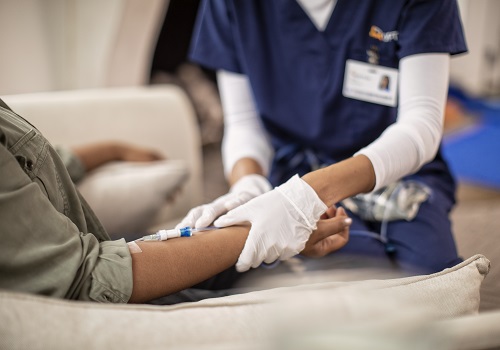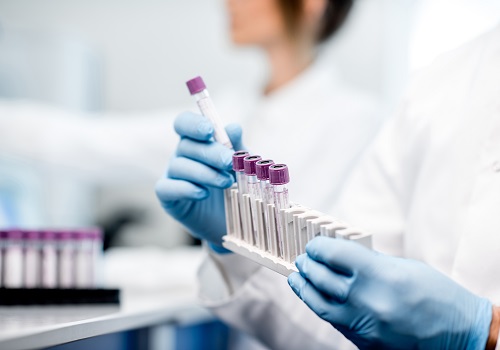The revolutionary shift toward biologic drugs continues to accelerate. Today approximately one in four new drugs is a biologic. Biologics are large, complex molecules produced from living organisms that tend to command high prices as specialty drugs. While less than 2% of the U.S. population uses these products, they account for 26% of the national prescription drug spend.1
Biosimilars are intended to do the same job for biologic medicines that generic drugs perform for traditional drugs. Both enter the market after the initial monopoly period expires for the original brand. For traditional (or, small molecule) drugs, generic competitors commonly drive prices down by 85 to 95%, and something similar is hoped for from biosimilars.2
However thus far, biosimilars haven’t had anything like the market presence they would need to meaningfully control biologic prices in the U.S. For example, while biosimilar spending has doubled since 2017, it still represents less than 2% of the total U.S. biologics market.3
In the spring of 2019, Optum Rx published an article titled, “What if biosimilars never arrive?” In it, we examined several of the structural barriers that appeared to be blocking widespread adoption of biosimilar drugs. For example, dense thickets of patents, especially in the U.S., allow manufacturers to block biosimilars and effectively foreclose competition for years after the exclusivity period.4
Around that same time, four leading drug pricing experts argued that biosimilars do not – in fact, cannot – create effective price competition. Rather, based on various structural barriers that are inherent to the biologics market, they believed biosimilars were a dead end as far as lowering prices for biologic medicines. Instead, they proposed that the U.S. should consider various forms of price controls to forcibly reduce the costs of biologics.2 Since that time there has been a spirited debate among those for and against the idea that biosimilars can effectively lower prices, with two of the original four experts arguing that it is time to “throw in the towel,” while others say that it is simply too soon to know.3, 5 Therefore, it seems fair to ask: How has the biosimilar market fared in the succeeding 20 months?
The answer may surprise you. Our pipeline analysis finds that biosimilars are experiencing one of the best years ever for new market launches.6 Far from the doom and gloom of early 2019, we can see a biosimilars boom, or golden age.7, 8
Here are some questions and answers around some of the new developments driving this improved biosimilar outlook.
1. Did COVID-19 have an impact?
Yes. The heightened financial pressures stemming from the pandemic are driving increased activity around biosimilars. Wholesalers report that hospitals, health systems, and infusion centers that had not previously pursued biosimilars are now increasingly asking about implementing biosimilar strategies.7
2. How is the pipeline activity?
Biosimilar developers and manufacturers continue to push new drugs through the pipeline and towards market. This graph shows pipeline activity from 2013 to current (worldwide). Preclinical activity is up 200%, while the number of marketed biosimilars has increased 226%.9.
In this view from the same source, we see that the total number of biosimilars in the pipeline has grown 208%.9
Biosimilar Development. Biosimilar Pipeline Experiencing 12% Annual Growth: A Progress Update. Posted March 26, 2020.
3. Are FDA approvals speeding-up?
This is a work in progress. Approvals have been quite slow, with only 28 U.S. Food and Drug Administration (FDA)-approved biosimilars since 2015.4 We can reasonably expect faster progress on approvals going forward.
First, the FDA has been working to improve the efficiency of the biosimilar approval process.7 And drug makers have noticed a difference, with one observing that “…the FDA has been very supportive in facilitating the biosimilar approval process over the past two years.” 10
Also, this year the FDA moved about 90 additional molecules from the traditional drug approval pathway to the biologic drug approval category, including insulin, human growth hormone, and certain infertility products. This could lead to a major expansion of biosimilar products.6
4. Are there more market launches?
The news here is also mixed. Approved drugs need to actually launch into the market in order to make an impact. However, thanks to the patent woes described above, progress has been slow: as of December 2019, only 12 (of the 27 then available) were actually on the market.1
But 2020 has proved to be a stellar year for new biosimilars, with six new market launches. That means as of early December 2020, fully one third of all available biosimilars launched just this year.10
While these new launches are welcome, we should expect another pause due to various patent and legal maneuverings. An analysis by the Optum Rx pipeline monitoring team indicates that the next big wave of new biosimilar launches won’t hit until 2023.6
5. Are we finally getting to lower costs?
Yes. Getting more biosimilars launched onto the market – and especially more for each specific biologic originator – is the key to success. This is the same thing that happens with traditional drugs – it takes multiple generics in a class to dramatically drive down prices.
When only one biosimilar competes with an originator product, there is usually only a slight cost difference between them. But when multiple biosimilars enter the same class, that’s when we see price erosion.10 Several innovator drugs now compete with multiple biosimilars. For example, there are five approved Herceptin® biosimilars, four approved Remicade® biosimilars (three of which are available), and three approved Neupogen® competitors.11 (Note: There are technically two biosimilars of Neupogen. Granix® is another filgrastim formulation that competes with Neupogen, but is not considered a biosimilar because a biosimilars approval pathway had not been established at the time of its FDA submission).12
As a result, biosimilar adoption in these categories is increasing, and prices are dropping. Let’s look at the three versions of Neupogen. By mid-2020, these three accounted for nearly three-quarters of the unit market share in that category, while their average sales prices are 40% to 50% below Neupogen.13
In some cases, the mere presence of biosimilar competition might also help control prices. We know that adoption of Remicade biosimilars has been slow. But in a bid to retain market share, its manufacturer appears to have offered discounts and rebates worth about 45% off its average sales price since the biosimilars launched.13
Not all of this activity is readily apparent. For example, analysts noted that during Pfizer’s second-quarter (2020) earnings conference call, news about the company’s potential payoff from its COVID-19 vaccine seemed to overshadow Pfizer’s biosimilar business. Actually, Pfizer’s global biosimilar sales grew 36% for that period, for an annualized rate of over $2 billion.8
The net result is that we are beginning to see actual cost savings flow into the market thanks to biosimilars. The analyst firm Sanford Bernstein calculates that biosimilar savings now amount to $6.5 billion (annualized).13 And a new IQVIA report states “recent events suggest an inflection has occurred” and they expect biosimilars to generate substantial cost savings – up to $100 billion in aggregate – over the next five years.14
6. What work still needs to be done?
Integrating biosimilars into the health system presents a host of unique challenges. At a recent conference one cancer specialist identified 12 separate steps for implementing biosimilars into practice. These include educating providers, implementing electronic medical records (EMR), inventory management for the brand and biosimilar, financial authorization, prior authorization, payer approval and copay assistance/medication assistance.7 This kind of granular, painstaking work needs to happen in clinics across the country before we can truly say that biosimilars have become part of the fabric of health care.7
Conclusion
If it was too soon to determine whether biosimilars were succeeding in 2019, it may still be too early to claim success today. But as more biosimilars enter the market and competitive pricing begins to emerge, we can perhaps cautiously say now that the biosimilars approach is not a dead end. Of course we need more progress on many fronts, but at least the outlines of a way forward are apparent.
You can rely on Optum Rx to keep you apprised of notable new drug approvals, including biosimilars. These timely updates are designed to increase your understanding of the long and near-term pharmaceutical pipeline, while alerting you to any appropriate cost-saving strategies.
Related content

4 steps to limit infusion drug costs

Drug development: Faster and cheaper?

Rare diseases, large costs
Sources
- Pharmacy Times. Overview of the Biosimilar Landscape. Published January 22, 2020. Accessed December 10, 2020.
- Health Affairs. Biologics Are Natural Monopolies: Part 1: Why Biosimilars Do Not Create Effective Competition. Part 2: A Proposal For Post- Exclusivity Price Regulation Of Biologics. Posted April 15, 2019. Accessed December 9, 2020.
- Wall Street Journal. Time to Throw In the Towel on Biosimilars. Published August 21, 2019. Accessed December 16, 2020.
- Managed Healthcare Executive. Is the Biosimilars Waiting Game Finally Over? Published July 30, 2020. Accessed December 10, 2020.
- AJMC: The Center for Biosimilars. Throwing in the Towel on Biosimilars Wouldn't Be Easy, Expert Says. Published September 5, 2019. Accessed December 9, 2020.
- Internal Optum Rx analysis. July, 2020.
- Biosimilar Development. TheLittle-Known Drivers Behind 2020's (And 2021's?) Biosimilar Boom. Posted October 28, 2020. Accessed December 9, 2020.
- Fierce Pharma. Pfizer, Amgen will rake in billions during 'golden age' for biosimilars: analyst. Posted August 5, 2020. Accessed December 10, 2020.
- Biosimilar Development. Biosimilar Pipeline Experiencing 12% Annual Growth: A Progress Update. Posted March 26, 2020. Accessed December 10, 2020.
- Biosimilar Development. Biosimilar Experts Reflect On 2020's Greatest Biosimilar Achievements. Posted December 9, 2020.
- U.S. Food and Drug Administration. Biosimilar Product Information. Content current as of December 7, 2020.
- Pharmacy Times. TBO-Filgrastim (Granix). Published March 3, 2014. Accessed December 16, 2020.
- Drug Channels. The Booming Biosimilar Market of 2020. Posted October 6, 2020. Accessed December 8, 2020.
- IQVIA Institute. Biosimilars in the United States 2020–2024. Published September 29, 2020. Accessed December 8, 2020.
STATEMENT REGARDING FINANCIAL INFLUENCE:
This article is directed solely to its intended audience about important developments affecting the pharmacy benefits business. It is not intended to promote the use of any drug mentioned in the article and neither the author nor Optum Rx has accepted any form of compensation for the preparation or distribution of this article.
